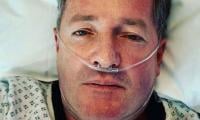Over half a million children raped in Pakistan annually but most cases go unnoticed: experts
Pakistan is one of the leading countries with child sexual abuse (CSA) in the world where around 550,000 (0.55 million) children, both boys and girls, are annually raped, but hardly a few hundred cases of sexual abuse come to the surface, experts and paediatricians working for the child rights have said.
Similarly, around 4.6 children, mostly girls, are married off before reaching 15 years of age in Pakistan, while 19 million children are married, both boys and girls, before the age of 18 years, they said and claimed that 88 percent children are subjected to violence and physical abuse by their own parents at their homes regularly in the country.
“Child sexual abuse which we see through media is just a tip of the iceberg, as, according to our research, over five lakh and fifty thousand children, both boys and girls are sexually abused -- in fact raped in Pakistan every year. Ironically, we have now laws in place for child protection, but they are not implemented,” Prof Naeem Zafar, a leading child rights activist, told the concluding session of the 26th Biennial International Conference in Karachi on Sunday.
He said child sexual abuse often goes unnoticed or no action is taken by the authorities as children are considered as “property” of their patents, while the issue is not often talked about in our society.
“Around one billion children suffer from child abuse in the world; of them, 120 million girls are subjected to sexual abuse. Around 300 million children of 2-4 years of age are subjected to physical punishment in the world. The same is the situation in Pakistan where around 88 percent children are subjected to physical punishment in the country,” Prof Naeem Zafar said.
Another child rights activist, Dr Tufail Muhammad, said most of the children in Pakistan are abused at home, forcing many of them to run away from their abodes, adding that runaway children experience more abuse, violence and exploitation on the streets, roads and workplaces in the country.
He deplored that despite approval by the cabinet in 2006, a plan of action to protect children from sexual abuse had not been implemented since 2006 in the country. Dr Kishwar Enam from Aga Khan University, while discussing child marriages in Pakistan, said that one in six children in Pakistan are married off in their childhood, and deplored that there is no column of CNIC in the Nikahnama in Sindh where child marriage is illegal before the age of 18 years.
On the occasion, Dean Associate Research at AKU Dr Asad Ali called for developing a charter of minimum child rights, which is different from the West, to protect Pakistani children from abuse and violence. Dr Ali added that there should be child-friendly hospitals and organisations in the country.
During the conference, which was attended by nearly 300 delegates, from all over Pakistan and also from abroad, both in person and on zoom, the paediatric association launched its first formal guidelines for the use of oxygen therapy, for both infants and children, suffering from pneumonia and other serious diseases where oxygen is required, especially in a hospital setting like intensive care and high dependency units.
The association also recommended paediatricians to refer all newborns who are born before the gestational age of 34 weeks and/or with a birth weight of less than 2kg and have used oxygen as part of their management to eye specialists as these babies can have problems with their eyes and potentially develop blindness if unchecked. However, with proper screening and laser treatment, this blindness in premature babies can be prevented.
A special session was arranged to address various health aspects of adolescent medicine. This age group from 10-19 years of age is complex and has unique set of both physical and mental health problems. Some of them may be overlooked as they fall in a transition zone between children and adults. Thus, the Paediatric Association pointed out the need for forming a special group to address the issues, including problems like teenage pregnancies.
In one of the sessions, it was shown that the recent number of deaths globally attributed to non-communicable diseases have increased to 41 million, which comprise 74 per cent of all deaths. The majority of these are happening in the lower middle income countries. The major causes of these deaths are cardiovascular disease, diabetes, respiratory problems and cancer.
Although these deaths happen during the adult age, the footprints of these are set in childhood and adolescent years such as poor dietary habits, obesity, lack of physical activity, high salt intake, and use of both smoke and smoke-free tobacco. In a recent study, overweight/obesity was found in 18-20 per cent of children, inadequate physical activity in over 60 per cent, improper diet in 85 per cent, and use of tobacco in up to 20 per cent. Thus, there is an urgent need for paediatricians to take up these issues with parents and prevent the NCDs later on in adult life.
The issue of safe workplace was also raised and PPA office-bearers said inappropriate FIRs against doctors and health workers were deplorable. The need for vandalism legislation at was highlighted at hospitals where the health worker is the first person facing the wrath of the common man when a mishap happens, leading to demotivation and affecting the quality of service.
-
 81-year-old Florida Woman Arrested After Chilling Murder Plot
81-year-old Florida Woman Arrested After Chilling Murder Plot -
 Cardi B Scores Major Earn Against Offset In Legal Battle
Cardi B Scores Major Earn Against Offset In Legal Battle -
 Bella Hadid Gets Honest About Receiving Support From 'The Beauty' Co-stars
Bella Hadid Gets Honest About Receiving Support From 'The Beauty' Co-stars -
 Nobel Foundation Reaffirms Its Core Responsibility To ‘safeguard The Dignity Of The Nobel Prizes’
Nobel Foundation Reaffirms Its Core Responsibility To ‘safeguard The Dignity Of The Nobel Prizes’ -
 Prince William, Kate Middleton Warned Of Meghan Markle’s UK Return
Prince William, Kate Middleton Warned Of Meghan Markle’s UK Return -
 Melissa Leo Reveals How Winning An Oscar Made Things Worse
Melissa Leo Reveals How Winning An Oscar Made Things Worse -
 Piers Morgan In Hospital: Here's Why
Piers Morgan In Hospital: Here's Why -
 IPhone 18 Pro Leaked: New Design Reveals Radical Corner Camera Layout
IPhone 18 Pro Leaked: New Design Reveals Radical Corner Camera Layout -
 Kung Fu Legend Siu-Lung Leung Passes Away At 77
Kung Fu Legend Siu-Lung Leung Passes Away At 77 -
 Kim Kardashian To Remove Ex Kanye West From Her Kids' Names
Kim Kardashian To Remove Ex Kanye West From Her Kids' Names -
 Queens Mother Arrested After Abducting Child From Court-ordered Visit
Queens Mother Arrested After Abducting Child From Court-ordered Visit -
 Sarah Ferguson Ready To ‘spread Her Wings’ After Separating From ‘disgraced’ Andrew
Sarah Ferguson Ready To ‘spread Her Wings’ After Separating From ‘disgraced’ Andrew -
 Finn Wolfhard Shares How Industry Views Him Post 'Stranger Things'
Finn Wolfhard Shares How Industry Views Him Post 'Stranger Things' -
 Dylan O'Brien Gets Nostalgic After Reunion With Old Friend
Dylan O'Brien Gets Nostalgic After Reunion With Old Friend -
 UK Doctors Warn Screen Time Is Harming Children’s Health
UK Doctors Warn Screen Time Is Harming Children’s Health -
 Meghan Markle To Get Police Protection In UK If Travelling With Archie, Lilibet
Meghan Markle To Get Police Protection In UK If Travelling With Archie, Lilibet



